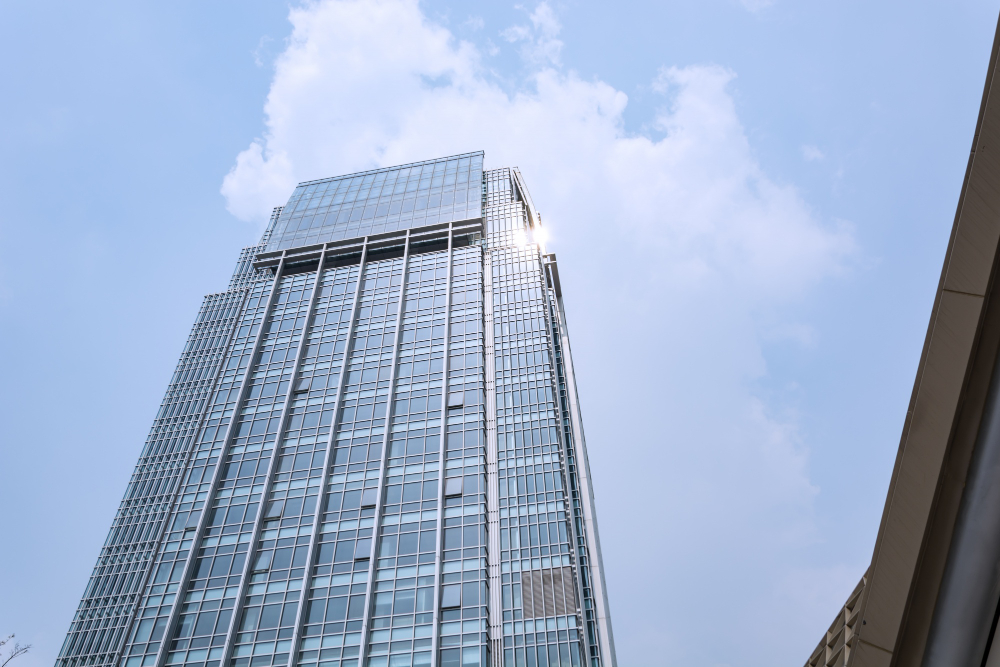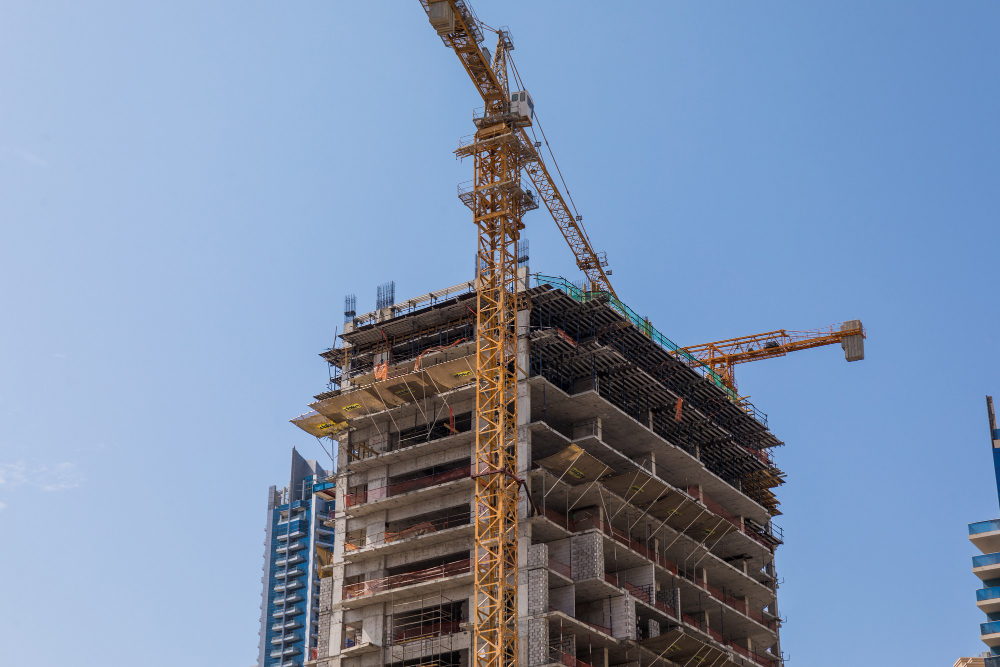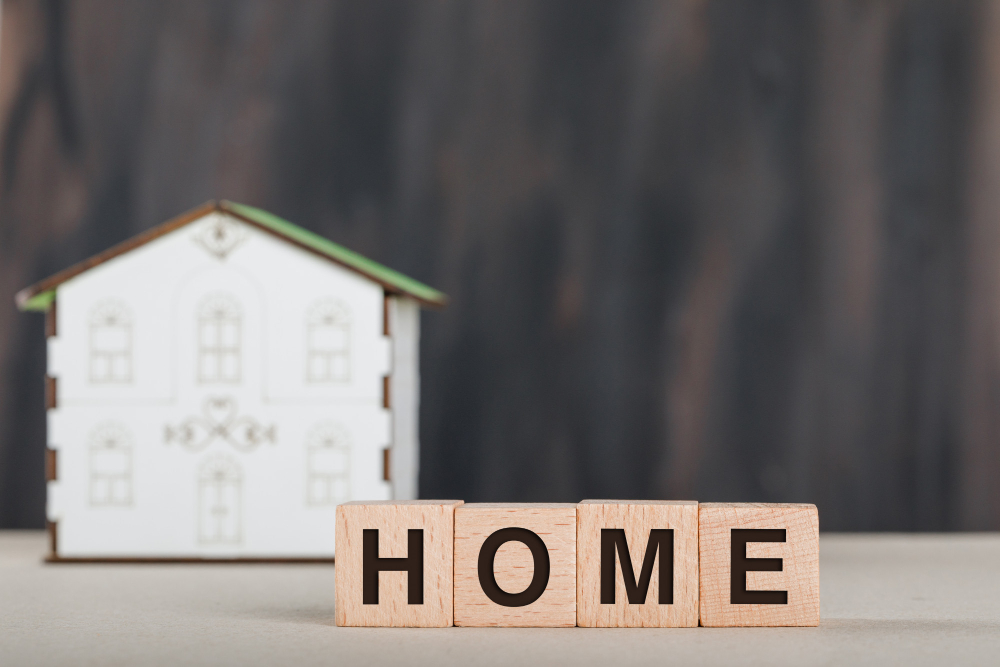FAST TRAIN TO RICHES
วันที่ : 30 พฤษภาคม 2562
Plot prices in Bangkok will continue to grow, driven by mass transit lines and changes in land use regulations
STORY: KANANA KATHARANGSIPORN
Plot prices in Bangkok will continue to grow, driven by mass transit lines and changes in land use regulations
Land prices in Greater Bangkok are expected to keep rising, driven by construction of new mass transit lines citywide and key changes in land use regulations in the amended Bangkok city plan, even with the new land and buildings tax scheduled to take e ect early next year.
The cost of the land and buildings tax is lower than the rate at which land prices are increasing, particularly in prime locations, said Atip Bijanonda, president of the Housing Business Association.
"The burden from the land and buildings tax will have a minimal impact on landlords, as the capital gain from land is very attractive and much higher," he said. "Landlords will push this cost to buyers anyway."
Mr Atip said land prices will continue increasing this year. In locations near mass transit lines, they will grow by more than 10% a year, which will a ect the prices of condos by 5% for every 10% rise.
Vichai Viratkapan, acting director-general of the Real Estate Information Center (REIC), said mass transit lines are one of two key drivers of land price increases in Greater Bangkok. Land near new mass transit lines has an average price increase of 24.6% a year.
"Land prices always rise when there is news about a development plan, construction or the start of operations for a new mass transit line near those lands," he said.
According to an REIC study on changes in land prices, the difference in land prices for locations near future mass transit lines and those located far from mass transit lines depends on the timeline of the construction process.
The largest difference is found in locations near future mass transit lines where construction has yet to start. There is a price differential of 66.7% when compared with locations with no mass transit lines.
Locations near mass transit where construction has started have a price differential of 51.6%. In locations where mass transit lines are already operating, the price differential is 28.8%.
The REIC said the top five locations along mass transit lines that saw the highest yearon-year increase in land prices in the first quarter this year were all along future lines.
The highest was in locations along an extension of the Blue Line from Bang Khae to Phutthamonthon Sai 4, a rise of 46.6%, followed by the Light Red Line from Taling Chan to Sala Ya (43.8%).
These two locations were also among the top three for land along current and future mass transit lines in the fourth quarter last year. Their land prices rose 35.8% and 40.1% year-on-year, respectively.
The third highest year-on-year increase in land price in the first quarter was along an extension of the Green Line from Ku Kot to Lam Luk Ka (38.7%). It was followed by an extension of the Green Line from Samut Prakan to Bang Pu, where prices rose 31.2% for the period. Locations along this line from Bearing to Samut Prakan, which started running on Dec 6, 2018, also saw a similar increase in land prices.
The fifth-highest year-on-year increase in land prices in locations along current and future mass transit lines was for the Grey Line from Vacharapol to Rama IX Road to Tha Phra.
The REIC monitors quarterly changes in prices of vacant land in Bangkok, Nonthaburi, Pathum Thani, Samut Prakan, Samut Sakhon and Nakhon Pathom, with 2012 as the base year.
The centre uses data for land transactions collected from the Lands Department and selects only vacant land sized from 200 square wah that was bought by companies, as most of them report actual prices for annual tax calculation.
In the first quarter of 2019, the price index for vacant land in Greater Bangkok rose 21.5% to 229.7 from 189.0 in the same period last year. It increased 2.9% from 223.2 in the fourth quarter of 2018.
The highest year-on-year rise was in Nakhon Pathom, up 67.4%, mostly in Sam Phran and Muang districts because of the planned extension of the Blue Line from Hua Lamphong-Bang Khae to Phutthamonthon Sai 4.
Nakhon Pathom was also ranked among the top five locations for highest year-on-year increase in land prices in the third and fourth quarters of 2018, with respective rises of 45% and 55.1%.
Mr Vichai said the change in land use regulations, such as a higher floor area ratio and higher density, is another factor driving land prices. This factor boosts land prices by 22.8% on average.
Compared with lands in agricultural zones, land prices in commercial zones are 126% higher, followed by high-density residential zones (117% higher), medium-density residential zones (96.5% higher) and low-density residential zone (75.3% higher), according to the REIC.
One cluster of locations to be affected by changes in land use regulations and future mass transit lines is Phra Khanong-Bang Na-Suan Luang-Prawet, which recorded a yearon-year rise of 61.8% in land prices in the fourth quarter last year.
"Locations in Suan Luang districts will change from a low-density residential zone to a medium-density residential zone, allowing them to have higher land use," said Phattarachai Taweewong, associate director of research for property consultant Colliers International Thailand. " This location has drawn developer interest for upscale residential projects, as there is a new road with convenient access to inner-city areas."
The Yellow Line from Lat Phrao to Samrong is 18% complete and will pass this location, boosting land prices in Suan Luang by more than 10% to 140,000 baht per sq wah, Mr Phattarachai said.
Suphin Mechuchep, managing director of property consultant JLL Thailand, said land costs will remain a key challenge for developers, which must utilise a variety of strategies to cope.
For new office development, land should be in the central business district (CBD) locations and not far from mass transit stations, Mrs Suphin said. But land prices in those locations are so high that yields from investment in new office development are unattractive.
If a plot is priced at 2 million baht per sq wah, an average yield from Grade A office development may be only 4% a year. For land at the same location with a leasehold of 30-50 years, yield may be 8-10%.
"There remain some plots in the CBD with good potential to develop an office tower," Mrs Suphin said. " Their landlords do not want to sell them or invest to develop by themselves. A long-term lease is a good strategy for both landlords and investors. This trend will see further growth."
Plot prices in Bangkok will continue to grow, driven by mass transit lines and changes in land use regulations
Land prices in Greater Bangkok are expected to keep rising, driven by construction of new mass transit lines citywide and key changes in land use regulations in the amended Bangkok city plan, even with the new land and buildings tax scheduled to take e ect early next year.
The cost of the land and buildings tax is lower than the rate at which land prices are increasing, particularly in prime locations, said Atip Bijanonda, president of the Housing Business Association.
"The burden from the land and buildings tax will have a minimal impact on landlords, as the capital gain from land is very attractive and much higher," he said. "Landlords will push this cost to buyers anyway."
Mr Atip said land prices will continue increasing this year. In locations near mass transit lines, they will grow by more than 10% a year, which will a ect the prices of condos by 5% for every 10% rise.
Vichai Viratkapan, acting director-general of the Real Estate Information Center (REIC), said mass transit lines are one of two key drivers of land price increases in Greater Bangkok. Land near new mass transit lines has an average price increase of 24.6% a year.
"Land prices always rise when there is news about a development plan, construction or the start of operations for a new mass transit line near those lands," he said.
According to an REIC study on changes in land prices, the difference in land prices for locations near future mass transit lines and those located far from mass transit lines depends on the timeline of the construction process.
The largest difference is found in locations near future mass transit lines where construction has yet to start. There is a price differential of 66.7% when compared with locations with no mass transit lines.
Locations near mass transit where construction has started have a price differential of 51.6%. In locations where mass transit lines are already operating, the price differential is 28.8%.
The REIC said the top five locations along mass transit lines that saw the highest yearon-year increase in land prices in the first quarter this year were all along future lines.
The highest was in locations along an extension of the Blue Line from Bang Khae to Phutthamonthon Sai 4, a rise of 46.6%, followed by the Light Red Line from Taling Chan to Sala Ya (43.8%).
These two locations were also among the top three for land along current and future mass transit lines in the fourth quarter last year. Their land prices rose 35.8% and 40.1% year-on-year, respectively.
The third highest year-on-year increase in land price in the first quarter was along an extension of the Green Line from Ku Kot to Lam Luk Ka (38.7%). It was followed by an extension of the Green Line from Samut Prakan to Bang Pu, where prices rose 31.2% for the period. Locations along this line from Bearing to Samut Prakan, which started running on Dec 6, 2018, also saw a similar increase in land prices.
The fifth-highest year-on-year increase in land prices in locations along current and future mass transit lines was for the Grey Line from Vacharapol to Rama IX Road to Tha Phra.
The REIC monitors quarterly changes in prices of vacant land in Bangkok, Nonthaburi, Pathum Thani, Samut Prakan, Samut Sakhon and Nakhon Pathom, with 2012 as the base year.
The centre uses data for land transactions collected from the Lands Department and selects only vacant land sized from 200 square wah that was bought by companies, as most of them report actual prices for annual tax calculation.
In the first quarter of 2019, the price index for vacant land in Greater Bangkok rose 21.5% to 229.7 from 189.0 in the same period last year. It increased 2.9% from 223.2 in the fourth quarter of 2018.
The highest year-on-year rise was in Nakhon Pathom, up 67.4%, mostly in Sam Phran and Muang districts because of the planned extension of the Blue Line from Hua Lamphong-Bang Khae to Phutthamonthon Sai 4.
Nakhon Pathom was also ranked among the top five locations for highest year-on-year increase in land prices in the third and fourth quarters of 2018, with respective rises of 45% and 55.1%.
Mr Vichai said the change in land use regulations, such as a higher floor area ratio and higher density, is another factor driving land prices. This factor boosts land prices by 22.8% on average.
Compared with lands in agricultural zones, land prices in commercial zones are 126% higher, followed by high-density residential zones (117% higher), medium-density residential zones (96.5% higher) and low-density residential zone (75.3% higher), according to the REIC.
One cluster of locations to be affected by changes in land use regulations and future mass transit lines is Phra Khanong-Bang Na-Suan Luang-Prawet, which recorded a yearon-year rise of 61.8% in land prices in the fourth quarter last year.
"Locations in Suan Luang districts will change from a low-density residential zone to a medium-density residential zone, allowing them to have higher land use," said Phattarachai Taweewong, associate director of research for property consultant Colliers International Thailand. " This location has drawn developer interest for upscale residential projects, as there is a new road with convenient access to inner-city areas."
The Yellow Line from Lat Phrao to Samrong is 18% complete and will pass this location, boosting land prices in Suan Luang by more than 10% to 140,000 baht per sq wah, Mr Phattarachai said.
Suphin Mechuchep, managing director of property consultant JLL Thailand, said land costs will remain a key challenge for developers, which must utilise a variety of strategies to cope.
For new office development, land should be in the central business district (CBD) locations and not far from mass transit stations, Mrs Suphin said. But land prices in those locations are so high that yields from investment in new office development are unattractive.
If a plot is priced at 2 million baht per sq wah, an average yield from Grade A office development may be only 4% a year. For land at the same location with a leasehold of 30-50 years, yield may be 8-10%.
"There remain some plots in the CBD with good potential to develop an office tower," Mrs Suphin said. " Their landlords do not want to sell them or invest to develop by themselves. A long-term lease is a good strategy for both landlords and investors. This trend will see further growth."
ข่าว reic จากสื่อสิ่งพิมพ์ อื่นๆ





